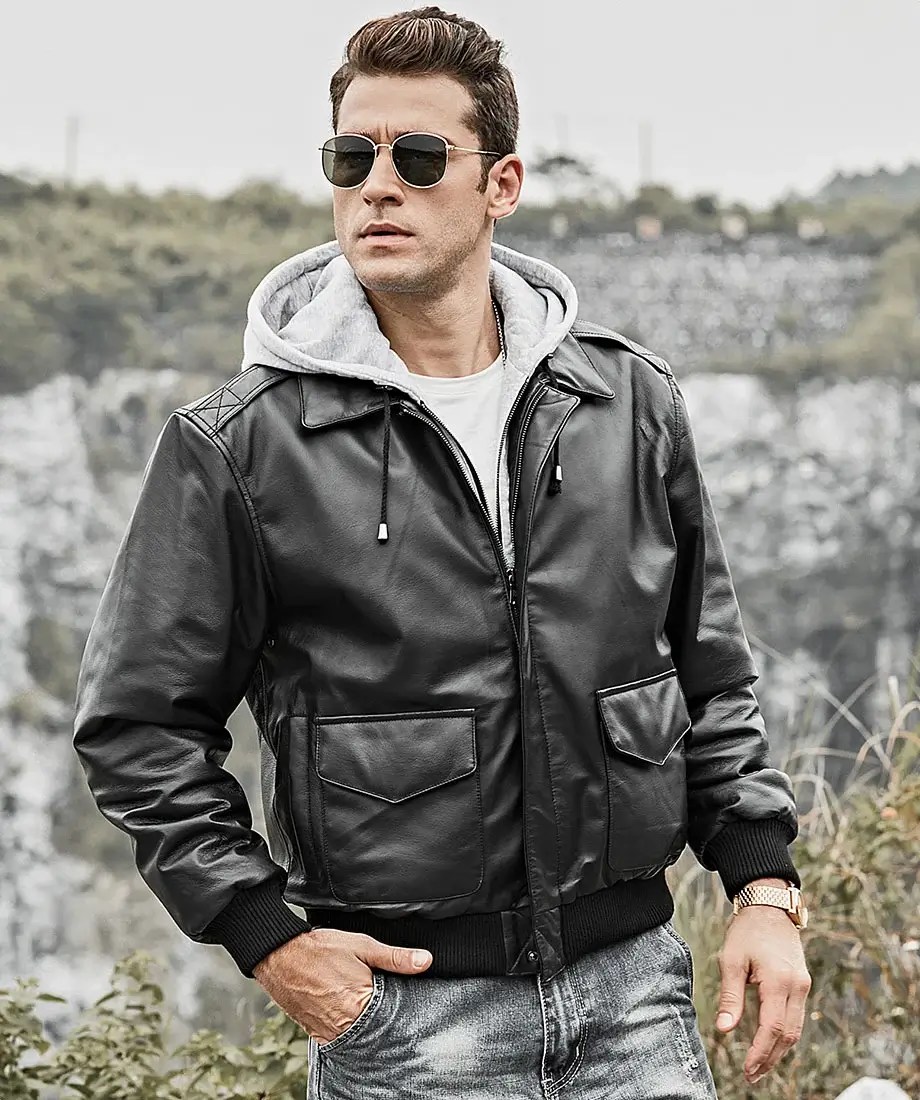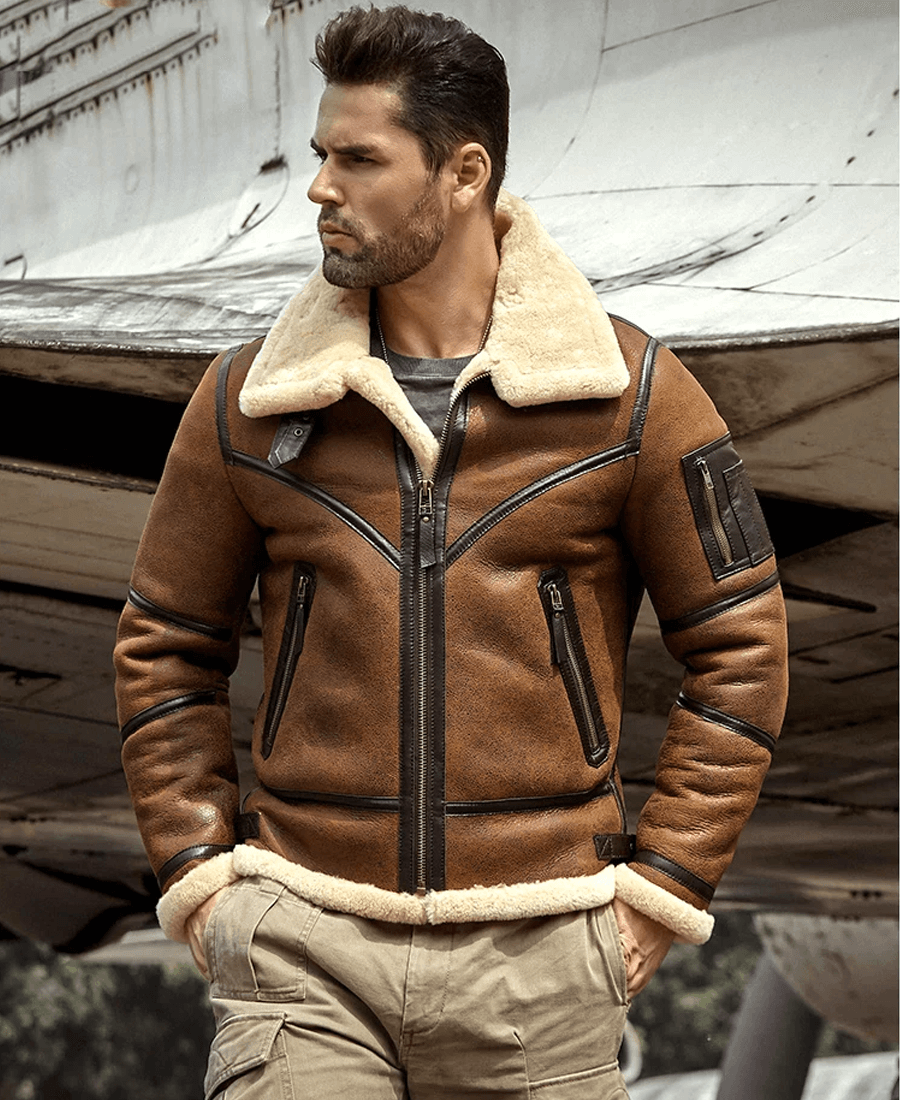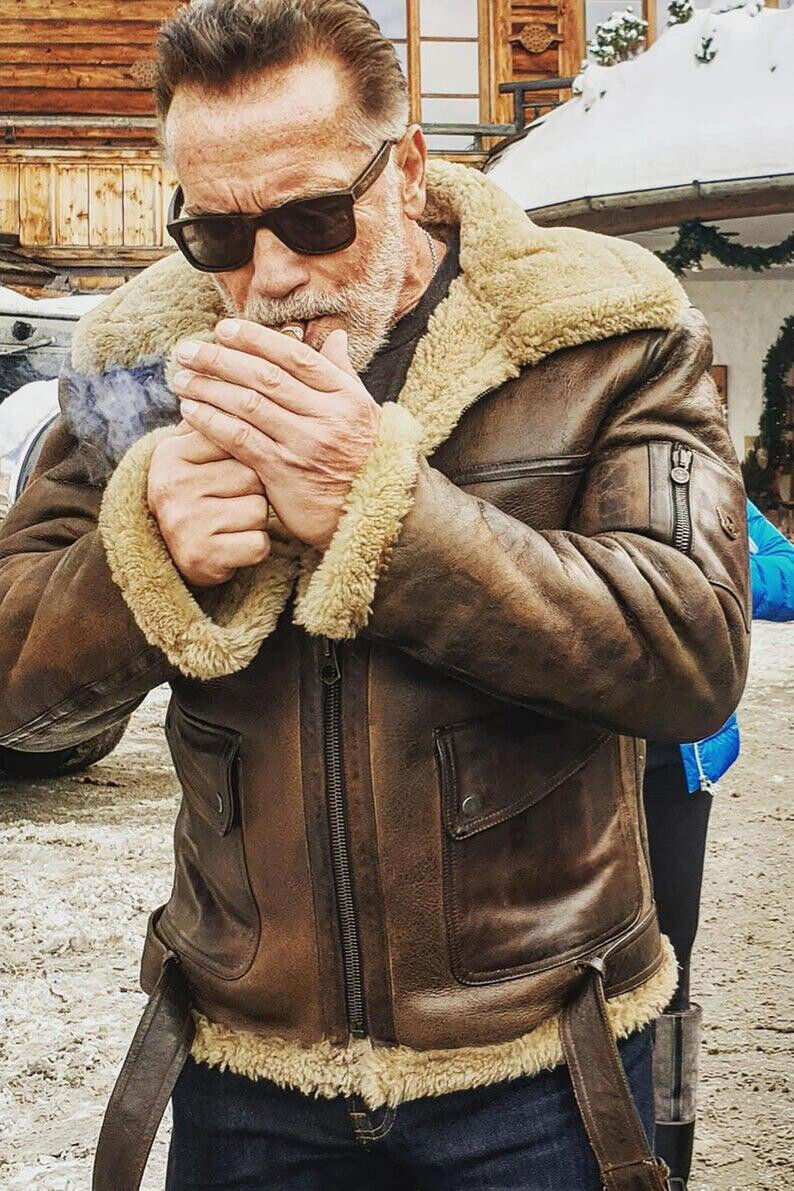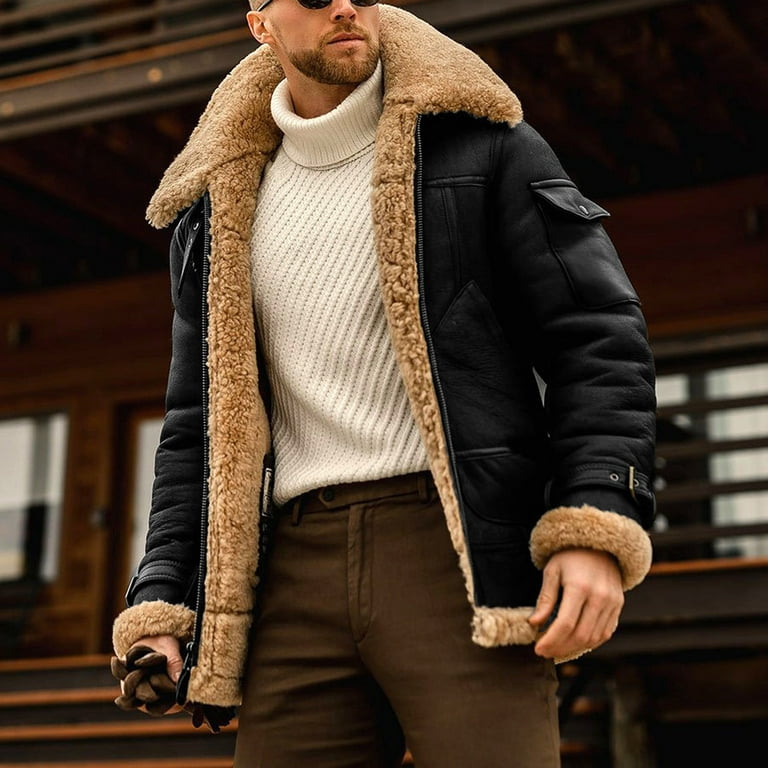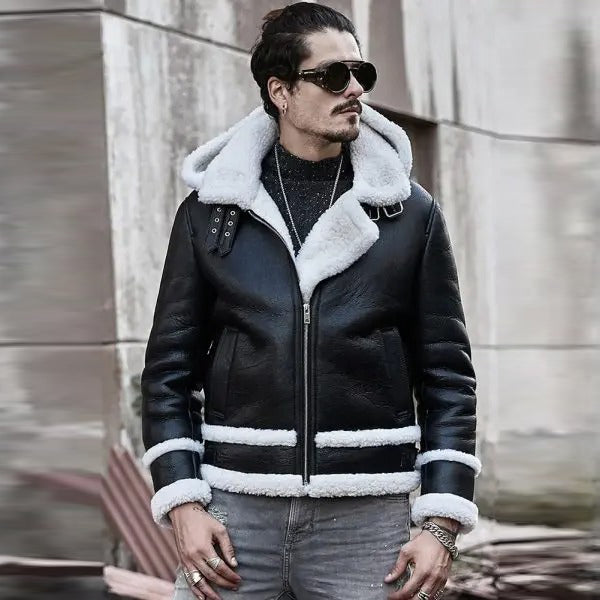The History of the Aviator Jacket
The aviator jacket’s history is deeply woven into the fabric of aviation and military traditions. Initially, these jackets emerged from a necessity. Pilots in the early 20th century faced extreme conditions at high altitudes. Their open cockpits exposed them to chilling winds and freezing temperatures. Thus, the need for robust and warm attire became crucial. Enter the aviator jacket.
In 1917, the U.S. Army established the Aviation Clothing Board. This board sought to outfit WWI aviators with appropriate gear. Among the items was the flight jacket, designed to ensure pilots stayed warm and agile. These early jackets were typically made from leather. They often featured high wraparound collars, zipper closures with wind flaps, snug cuffs, and hems—design elements meant to trap body heat and block the wind. Simultaneously, European countries and their armies began developing similar gear.
Over the years, the aviator jacket evolved. Between WWI and WWII, newer versions emerged. One notable iteration was the A-2 jacket, introduced in the 1930s. This was the official jacket of American aviators in WWII. The A-2 featured a leather construction, a front zipper, and knitted cuffs and waistbands. These helped keep cold air out, making it a favorite among pilots who often flew in unpressurized cabins at high altitudes.
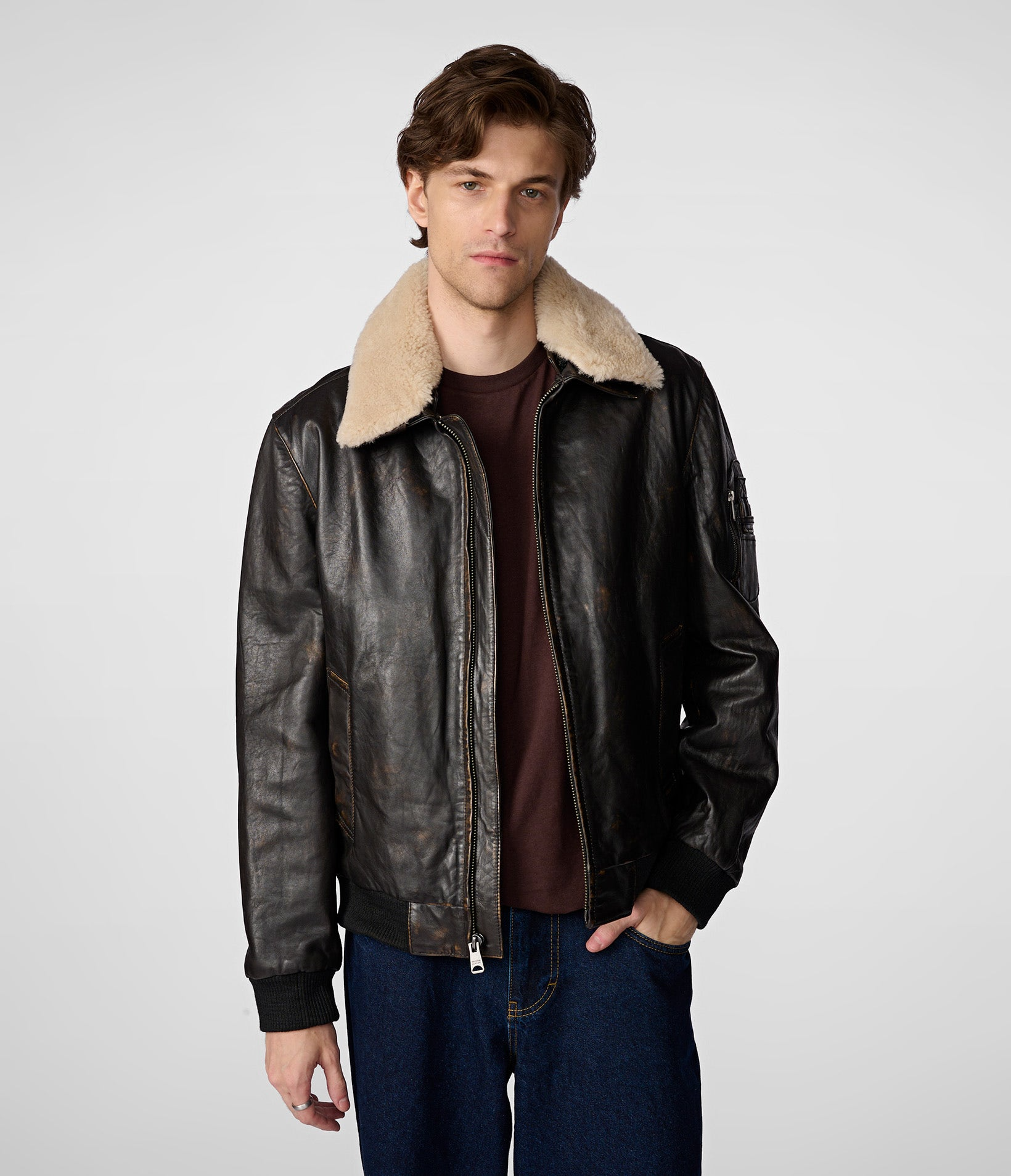
However, it wasn’t just military forces that adopted the aviator jacket. By the mid-20th century, the jacket transitioned into civilian wear. Soon, it became a symbol of ruggedness and masculinity. Hollywood played a significant role in this transformation. Films featuring charismatic pilots and adventurers sporting these jackets captured the public’s imagination. Icons like Marlon Brando in “The Wild One” and James Dean in “Rebel Without a Cause” further cemented its place in popular culture.
The jacket’s appeal transcends generations. Its timeless design and functionality resonate with people from all walks of life. Today, fashion houses and brands continually reinterpret and reimagine the aviator jacket. Yet, its core elements remain unchanged—a testament to its perfect blend of style and utility.
Key Features of The Aviator Jacket
Warmth and Insulation
The primary purpose of the aviator jacket was to provide warmth. Early versions were often made from horsehide leather, a durable and thick material. This leather was adept at blocking wind and retaining heat. On the inside, many jackets were lined with shearling or wool. These materials offered excellent insulation, crucial for pilots who faced freezing temperatures at high altitudes.
Later versions continued to focus on warmth. The shearling lining remained popular, especially in jackets designed for winter wear. Modern iterations sometimes use synthetic insulations, providing the same warmth while being more lightweight and flexible. Despite these changes, the core purpose remains the same—to keep the wearer warm in adverse conditions.
Durability and Protection
Another significant feature of aviator jackets is their durability. Combat and long hours in the cockpit demanded tough and resilient gear. Leather, the primary material, provided this toughness. It could withstand abrasions, impacts, and the test of time. The robust nature of the leather ensured the jacket could endure the demanding conditions pilots often faced.
In addition to the material, the construction of the jacket contributed to its durability. High-quality stitching, reinforced seams, and sturdy zippers all played a role. These elements ensured the jacket would last through many flights and adventures. Over time, these durable features made the jacket popular among bikers and outdoor enthusiasts seeking reliable outerwear.
Functional Design
Functionality was critical in the design of the aviator jacket. Every element was purposeful. The high wraparound collar could be worn up to protect the neck from harsh winds. Zippers with wind flaps kept cold air from penetrating the jacket. Snug cuffs and waistbands trapped body heat, providing an additional layer of warmth.
Pockets were another essential feature. Early jackets often had multiple pockets, both inside and out. These offered pilots easy access to tools, maps, and other necessary items while in-flight. Today, the pockets remain, serving both functional and stylistic purposes. They provide storage and add to the jacket’s rugged aesthetic.
Versatility in Style
The design of the aviator jacket is versatile, making it suitable for various styles and occasions. Its classic look pairs well with casual attire, adding a touch of rugged sophistication. At the same time, the jacket can be dressed up, worn over a shirt and tie for a more polished appearance. The versatility lies in its design simplicity and timeless appeal.
Fashion designers continue to draw inspiration from the aviator jacket. They play with materials, colors, and cuts, creating modern takes on the classic piece. Despite these variations, the core elements—leather, warmth, and durability—remain. This balance of tradition and innovation ensures the aviator jacket stays relevant in the ever-evolving world of fashion.
The Aviator Jacket in Popular Culture
Hollywood’s Influence
Hollywood significantly amplified the appeal of the aviator jacket. The jacket’s rugged and masculine aesthetic made it a popular choice for leading men. It began with war films where actors portrayed daring pilots. The iconic look soon spread to other genres.
One of the most memorable appearances is in the film “Top Gun.” Tom Cruise, playing the role of Pete “Maverick” Mitchell, donned an aviator jacket that became iconic. The combination of the jacket, aviator sunglasses, and Cruise’s charismatic portrayal made a lasting impression. It renewed interest in the jacket, making it a sought-after item among moviegoers and fashion enthusiasts alike.
Another notable mention is Harrison Ford in the “Indiana Jones” series. Though not strictly an aviator jacket, his leather jacket drew heavily from the same aesthetic. Its rugged look complemented his adventurous character, further ingraining the jacket’s association with excitement and daring.
Music and Subculture Influence
Beyond Hollywood, the aviator jacket found its way into various music and subcultures. The punk and rock scenes of the 1970s and 1980s embraced the jacket. Musicians and fans wore it as a symbol of rebellion and individuality. The jacket’s tough and rugged look perfectly matched the ethos of these movements.
Icons like The Ramones and The Clash were often seen sporting leather jackets, further popularizing the look. The association with rebellious music and counterculture added another layer to the jacket’s image. It became more than just a piece of clothing—it became a statement.
Fashion Runways and Designers
Fashion designers have long taken inspiration from the aviator jacket. Over the years, it has graced runways in various forms. High-end fashion houses like Gucci, Saint Laurent, and Burberry have all featured versions of the aviator jacket in their collections. These renditions often incorporate luxurious materials and intricate designs, elevating the jacket from rugged outerwear to high fashion.
Despite these high-fashion interpretations, the essence of the aviator jacket remains. Designers retain the key elements—leather, warmth, and a rugged look. This balance of tradition and innovation keeps the jacket relevant and desirable across different demographics and fashion sensibilities.
How to Style an Aviator Jacket
Casual Looks
The aviator jacket excels in casual settings. Pairing it with jeans and a simple t-shirt creates a timeless and effortless look. This combination is ideal for everyday wear, offering both style and comfort. Opt for a classic brown or black leather jacket for a versatile piece that complements various casual outfits.
In colder months, layering becomes essential. The aviator jacket works well over hoodies or sweaters. This not only adds warmth but also introduces texture and depth to your outfit. Finish the look with boots or casual sneakers for a cohesive ensemble.
Smart Casual
For a more refined appearance, the aviator jacket can be dressed up slightly. Pair it with chinos and a button-down shirt. This smart casual look is perfect for events that require a bit more polish without being overly formal. A dark leather jacket works best in this setting, providing a sleek and sophisticated finish.
Experiment with accessories to enhance the look. Scarves, belts, and sunglasses can add a touch of personality. Remember to keep the base outfit simple and let the jacket be the focal point. This ensures a balanced and aesthetically pleasing look.
Dressing Up
Though unconventional, the aviator jacket can be incorporated into more formal attire. Pairing it with tailored trousers and a crisp shirt elevates the jacket beyond casual wear. This look is best suited for fashion-forward individuals who enjoy pushing the boundaries of traditional style.
Opt for a high-quality leather jacket with minimal detailing for a more polished appearance. Avoid overly casual elements like distressed finishes or patches. Instead, focus on clean lines and a well-fitted jacket. This approach ensures the outfit remains elegant while highlighting the jacket’s rugged charm.
Caring for Your Aviator Jacket
Cleaning and Maintenance
Proper care is essential to maintaining the longevity and appearance of your aviator jacket. Regular cleaning is crucial, especially for leather jackets. Use a damp cloth to wipe down the jacket, removing any surface dirt and dust. Avoid soaking the leather, as excess moisture can damage it.
For more thorough cleaning, consider professional leather cleaning services. They possess the expertise and equipment necessary to clean and condition your jacket properly. This service is particularly useful for older jackets or those with significant staining or wear.
Conditioning Leather
Leather requires conditioning to stay supple and prevent cracking. Use a high-quality leather conditioner, applying it to the jacket with a soft cloth. Ensure an even application and allow the conditioner to soak into the leather. This process helps maintain the jacket’s softness and extends its lifespan.
Conditioning should be done periodically, depending on how often you wear the jacket. For regularly worn jackets, conditioning every few months is advisable. This routine care ensures the leather remains in top condition and continues to look its best.
Storage Tips
Proper storage is vital for maintaining your aviator jacket. When not in use, store it in a cool, dry place away from direct sunlight. Excessive heat and light can cause the leather to fade and become brittle. Avoid hanging the jacket in cramped spaces, as this can lead to creasing.
Use a padded hanger to maintain the jacket’s shape. The padding prevents indentations and ensures the shoulders and collar remain structured. For long-term storage, cover the jacket with a breathable garment bag. This protects it from dust and pests while allowing the leather to breathe.
Conclusion
The aviator jacket is more than a piece of clothing. Its rich history, functional design, and cultural significance make it a timeless wardrobe staple. From its origins in military aviation to its present-day fashion status, the aviator jacket continues to captivate and inspire. Whether dressed up or down, it offers a unique blend of ruggedness and sophistication. Proper care and styling ensure this iconic piece remains a cherished part of your wardrobe for years to come.
